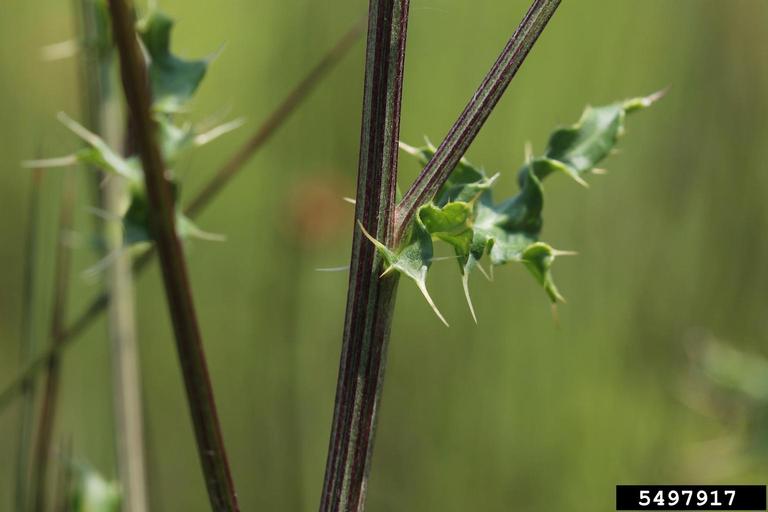Canada Thistle

Canada Thistle
(Cirsium arvense)
Priority: - Established / Strategic Control
Tags: Agricultural | Terrestrial
Identification and Reproduction
Identification:
- This plant is a root-creeping herbaceous perennial that can grow up to 2 m tall.
- The main stem is hairy but spineless.
- Canada thistle leaves are lance-shaped with irregular lobes and sharp prickly margins.
- Flowers can be white or purple, blooming in June to August.
- Seeds will look like white tufts and rante from 2-4mm long.
Reproduction:
- Canada thistle spreads quickly through horizontal roots
- Each individual plant can produce 1000 to 1500 seeds.
- Seeds can disperse through pets, wild animals, clothing, vehicles, and wind.
Habitat & Ecology
Mainly grows disturbed areas and can be found on forests, farmland, riparian, and roadsides.
Impacts
Social:
Canada thistly is a common weed in agricultural areas and is known to reduce crop yields and forage plants for grazers.
Ecological:
Outcompetes native vegetation and can establish dense stands.
Management
Mechanical/Manual Control:
- Mowing is effective prior to flowering stages.
- Consistent cutting of the plant will reduce plant growth and infestations.
- Hand pulling may be difficult as taproots are extensive and very deep.
- Treatments over several years must take place to effect plant invasions.
Biological Control:
Currently several weevils and a gall fly have been released to target Canada thistle.
Resources
Download the Invasive Species Council of BC’s Factsheet for Canada Thistle here.
Check out this video made by the University of Wisconsin to help identify the Canada Thistle.
Header photo (Matt Lavin).
Photo Gallery


×






